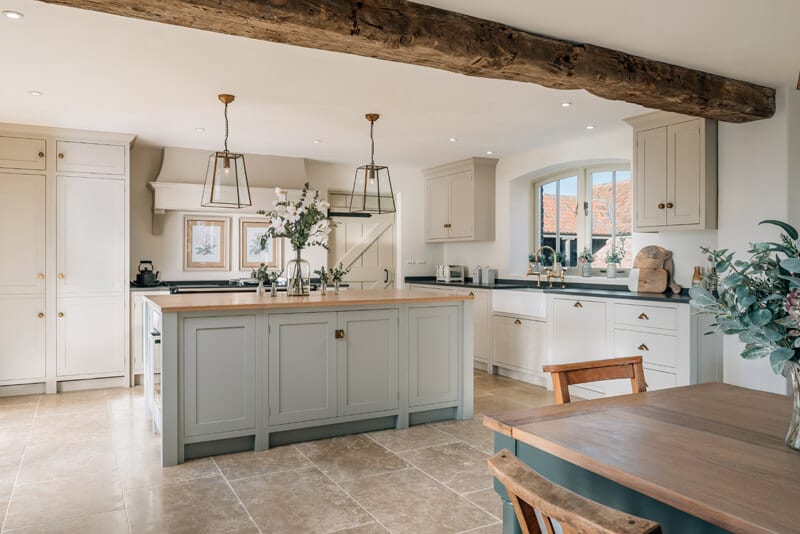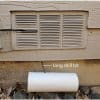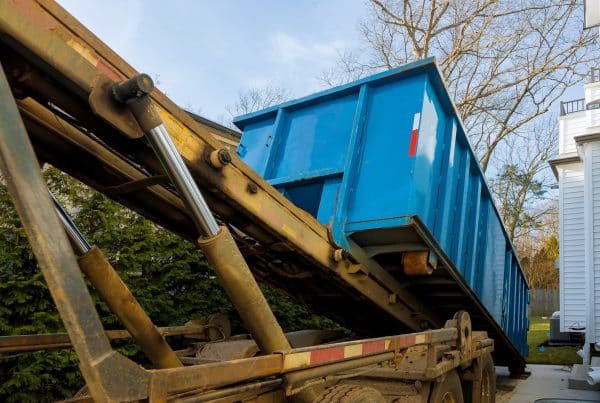You’ve decided it’s time. It’s time to stop messing around and work on the kitchen project that you’ve meant to get around to for years. Now, you’re finally out of excuses. Welcome to the research phase of your journey.
Various flooring options are available for your kitchen, and deciding which will suit your home best can be challenging. This guide will explore some of the most popular flooring materials and provide information about their pros and cons.
1. Hardwood Flooring
Adding hardwood flooring to your kitchen can be a great way to spruce up the room’s decor. Not only is it aesthetically pleasing, but hardwood floors are also incredibly durable and require minimal maintenance.
Regular sweeping and occasional sealing is all you need for your hardwood floors to remain in excellent condition for years to come. With its timeless look, hardwood flooring adds value to your home and makes your kitchen warm and inviting.
Pros:
- Adds value to your home
- Warm, inviting look
- Timeless beauty
- Low maintenance
Cons:
- Expensive compared to other flooring materials
- Can be scratched or dented easily if not cared for properly
- May require sanding and refinishing over time
2. Vinyl Flooring
When it comes to choosing a new flooring option for a kitchen, vinyl is becoming increasingly popular. Vinyl flooring provides an attractive and resilient solution that can withstand everyday wear and tear.
This flooring also offers a wide range of colors and styles, allowing you to create the perfect look for your kitchen. The top-of-the-line luxury vinyl planks are even scratch and scuff-resistant, meaning they won’t show premature signs of aging if taken care of properly.
And best of all, it’s easy maintenance makes it ideal for busy households with limited time for cleaning and upkeep. Whether you’re looking for classic vintage style or modern chic appeal, vinyl flooring makes it easy to get the look you want without worrying about the hassle.
Pros:
- Versatile design options
- Water-resistant
- Easy to clean and maintain
- Scratch and dent resistant
Cons:
- Not as durable as some other flooring materials
- May require periodic resealing to prevent discoloration or warping
- Can be slippery when wet, making it a potential safety hazard
3. Laminate Flooring
This option provides a sleek and modern look and is also resistant to stains, scuffs, and other signs of wear and tear from the daily hustle and bustle of life in a kitchen space.
Its easy applicability means you can have it installed relatively quickly, allowing you to enjoy its benefits immediately. Plus, with its affordable pricing, even budget-minded homeowners can easily fit laminate flooring into their renovation plans.
Pros:
- Affordable and easy to install
- Resistant to stains and scratches
- Sleek and modern look
Cons:
- Not as durable as hardwood or tile flooring
- Can be slippery when wet, making it a potential safety hazard
4. Tile Flooring
Tile flooring is a great choice of material for kitchen floors. Its durability ensures it will stay in excellent condition for years to come, eliminating the need for costly repairs.
Tile also protects from water damage, making it the perfect choice for an area with heavy water usage, such as the kitchen.
It also resists dirt and stains easily and can be simple to maintain with regular cleaning.
Pros:
- Durable and long-lasting
- Waterproof, making it ideal for kitchens with heavy water usage
- Resists dirt and stains easily
- Wide variety of design options available
Cons:
- Expensive compared to other flooring materials – Go online to shop flooring options and find the best deal
- Can be cold to the touch and uncomfortable to stand on for long periods of time
- Can be slippery when wet, making it a potential safety hazard
5. Concrete Flooring
Concrete flooring is becoming increasingly popular for kitchen floors due to its strong, durable properties and the beautiful range of colors and textures it can be made into. This type of flooring is made from cement, sand, and water, so you know it will last through many years of wear and tear.
Not only is it highly affordable compared to other flooring choices, but also easy to maintain and clean. You’ve got a fresh new floor every day with a simple routine of sweeping and occasionally mopping with a gentle solution.
Plus, cement naturally resists temperature changes and fires better than traditional floors — perfect for a kitchen space where hot plates and pans are often dropped or placed directly on the ground.
Pros:
- Highly durable and long-lasting
- Resistant to temperature changes and fire damage
- Low cost and easy maintenance
Cons:
- Not as customizable as other flooring material options
- Can be slippery when wet, making it a potential safety hazard
The Takeaway
When it comes to kitchen flooring, there are a variety of great options available to you. Each material has its own unique benefits, so it’s important to consider what you need in a floor before making a decision.
For example, if you’re looking for a highly durable option that will last for years with little maintenance, tile or concrete may be the best choice. However, laminate may be the way to go if you want something more affordable and easy to install.
We hope this article has helped provide insight into the different flooring materials available for kitchens. Thanks for hanging out today.








